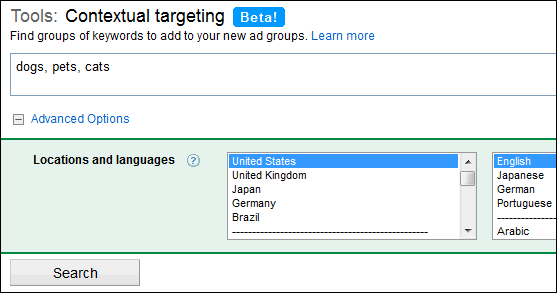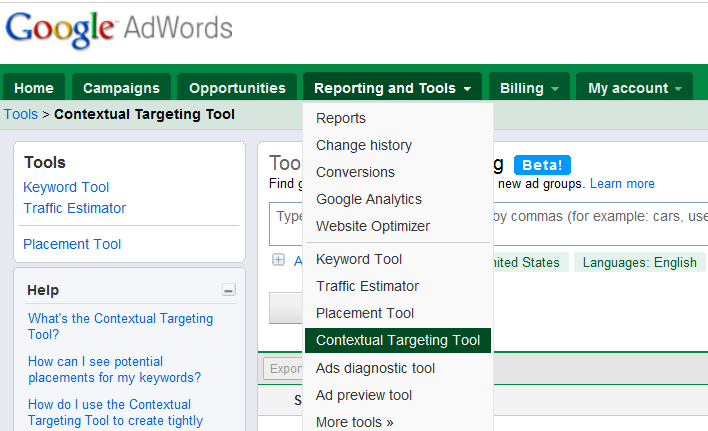Google Ads Contextual Targeting matches ads to relevant websites based on keywords and content. It helps advertisers reach specific audiences.
Contextual targeting is an essential feature of Google Ads. It displays ads on websites that match the advertiser’s chosen keywords. This method ensures that ads appear in a relevant context, increasing the likelihood of engagement. Advertisers can target audiences more effectively by aligning their ads with specific content.
This strategy not only enhances user experience but also improves ad performance. By placing ads in the right context, businesses can achieve better results and maximize their advertising budget. Contextual targeting is a powerful tool for reaching potential customers who are already interested in related topics. It is a key component of a successful online advertising campaign.

Credit: www.wordstream.com
Google Ads Contextual Targeting: A Game Changer
Google Ads Contextual Targeting has changed how ads work. Targeted ads have been around for years. They were not as effective before. Contextual targeting is different. It shows ads based on content. This means ads fit what users read or watch. Users see ads that match their interests. This makes ads more relevant.
Contextual targeting is better than other strategies. Behavioral targeting uses past actions. It tracks user history. Contextual targeting does not need user data. It respects privacy. Demographic targeting uses age or gender. It can be less precise. Contextual targeting uses the current page content. This makes it very accurate.
How Contextual Targeting Works
Keywords help Google match ads to relevant websites. Advertisers choose specific words for their ads. These words relate to the product or service. Google scans web pages for these keywords. Ads appear on pages with matching words. This ensures ads reach the right audience. Advertisers can also add negative keywords. This prevents ads from showing on unrelated pages.
Google uses content analysis to place ads. It looks at the text, images, and links on a page. This helps Google understand the page’s topic. Google then matches ads to the page’s content. This process improves ad relevance. Relevant ads perform better. This leads to higher click-through rates. Advertisers get more value for their money.
Setting Up Your Contextual Campaigns
Keywords help in showing your ads to the right audience. Select words that match your products or services. Use a keyword planner tool to find popular words. Aim for long-tail keywords to reach specific customers. Test different words to see what works best. Keep updating your list based on performance.
Organize your ads into ad groups. Each group should focus on a specific theme. This helps in targeting relevant content. Make sure your ads are related to the keywords in each group. Use negative keywords to avoid showing ads on unrelated content. Monitor your ad performance and make adjustments as needed.

Credit: www.verticalrail.com
Maximizing Roi With Smart Bidding
Automated bid strategies can save time. These strategies use machine learning. This helps to optimize your bids. Google Ads can adjust bids in real-time. This helps to get the best results. Using automated bids can increase your ROI.
Manual bid adjustments can be useful. These are needed when you spot trends. This allows you to have more control. Use manual adjustments during special events. This can be sales or promotions. Manual bids help to fine-tune your strategy.
Measuring The Impact Of Contextual Targeting
Click-Through Rate (CTR) shows how many people click your ad. A high CTR means your ad is interesting. Conversion Rate tells you how many clicks turn into sales or actions. A high Conversion Rate means your ad is effective. Cost Per Click (CPC) shows how much you pay for each click. Lower CPC means you spend less money. Return on Ad Spend (ROAS) shows how much money you earn from your ads. High ROAS means your ads are profitable.
Google Analytics helps you see how well your ads work. You can track user behavior on your website. Look for pages with high bounce rates. Adjust your ads to keep visitors longer. Check which keywords bring the most traffic. Focus on those keywords for better results. Compare data over time to see trends. Make changes based on what you learn.
Advanced Techniques And Best Practices
Machine learning helps in analyzing user behavior. It predicts which ads will perform best. This technology improves targeting accuracy. Ads are shown to users who are most likely to engage. This leads to higher conversion rates and better ROI.
Machine learning can also optimize ad placements. It ensures ads appear in the most relevant contexts. This reduces wasted ad spend. Businesses see more value from their ad budgets.
Contextual targeting works well across multiple channels. Combine it with social media, email, and content marketing. This ensures a consistent message across platforms. It also helps in reaching a wider audience.
Use data from one channel to inform targeting in another. This creates a seamless user experience. It increases the chances of conversion. Customers feel more connected to the brand.

Credit: www.cardinalpath.com
Frequently Asked Questions
What Is Contextual Targeting Option In Google Ads?
Contextual targeting in Google Ads displays your ads on web pages related to your keywords. It helps reach relevant audiences.
What Are Examples Of Contextual Targeting?
Examples of contextual targeting include displaying ads based on website content, keywords, and user browsing behavior. Ads can appear on relevant articles, blogs, or videos. This enhances ad relevance and user engagement.
What Is The Difference Between Contextual Targeting And Behavioral Targeting?
Contextual targeting displays ads based on the content of a webpage. Behavioral targeting shows ads based on user behavior and past activities.
How To Implement Contextual Targeting?
Identify relevant keywords. Create engaging content around those keywords. Use tools to analyze context. Place ads accordingly. Monitor performance and adjust.
What Is Google Ads Contextual Targeting?
Google Ads contextual targeting matches ads to relevant web content using keywords and topics.
Conclusion
Harness the power of Google Ads contextual targeting to reach the right audience. This method ensures your ads are relevant and effective. By focusing on context, you can boost engagement and conversions. Start optimizing your campaigns today and see the difference in performance and ROI.
